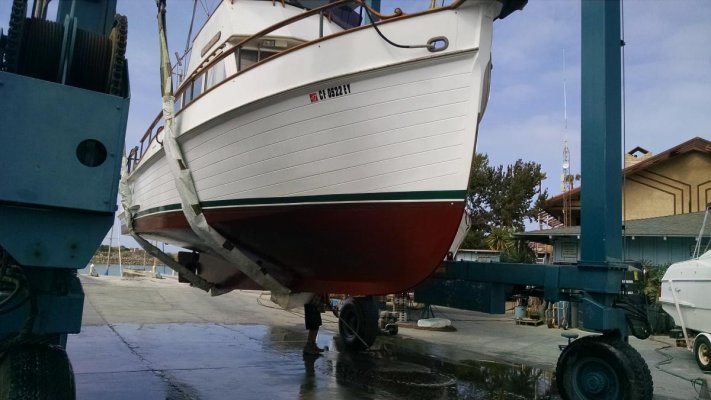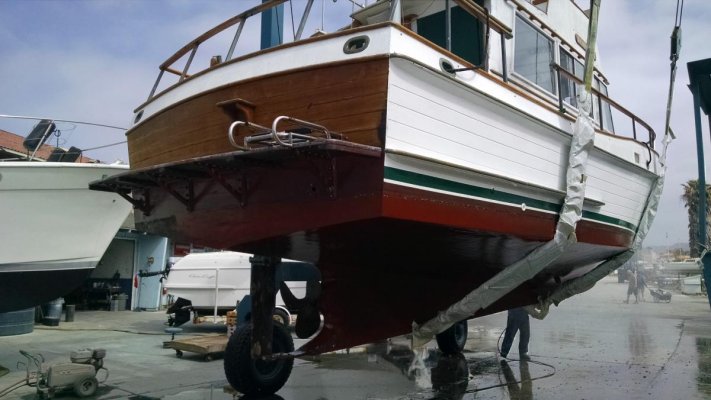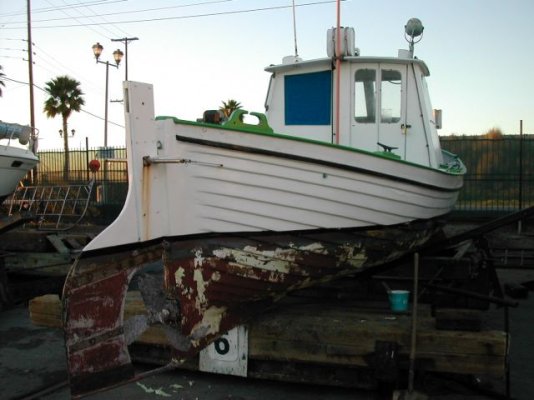mplangley
Veteran Member
I am having my new to me GB32 hauled out next week to have the bottom painted. Im wondering what to expect and what to be on the lookout for.
This is for me, literally my first haul out ever. I think my biggest fear is that the yard will "find problems" whereas I just want them to paint the bottom and put her back in the water.
The other question I have is about how long she can be in the yard before I have to worry about planks drying out and seams opening up. They said it would take about a week and a half to paint the bottom and redo the transom. Is that too long? Im thinking just for the sake of getting her back in the water I should have them skip the transom and just paint the bottom.
This is for me, literally my first haul out ever. I think my biggest fear is that the yard will "find problems" whereas I just want them to paint the bottom and put her back in the water.
The other question I have is about how long she can be in the yard before I have to worry about planks drying out and seams opening up. They said it would take about a week and a half to paint the bottom and redo the transom. Is that too long? Im thinking just for the sake of getting her back in the water I should have them skip the transom and just paint the bottom.







